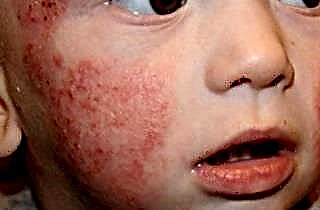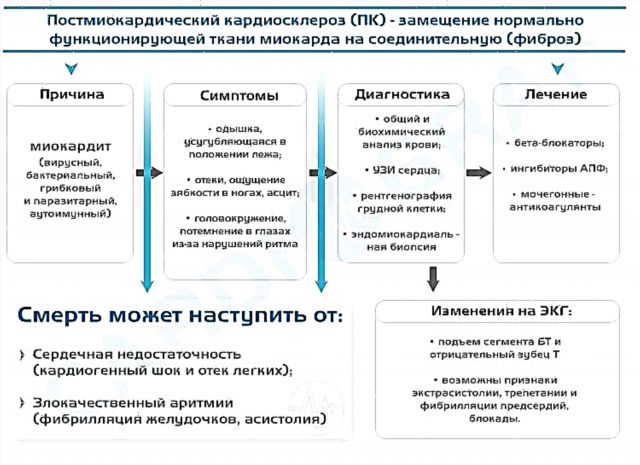The child's nose is quite sensitive to various injuries and the negative influence of external factors. Edema in it can develop for a variety of reasons, ranging from banal hypothermia to serious disorders in the body. It is important to understand in time what exactly caused the violation and eliminate its cause, otherwise serious complications may occur, up to a complete cessation of breathing.
Why does it appear
 Swelling of the nasal mucosa in a child is a protective reaction of the body to any irritants. The nasal cavity contains a large number of choroid plexuses; this is one of the parts of the body with the best blood supply. When any threat arises, mast cells and antibodies are actively transported to the mucous membrane. Blood circulation increases, which causes swelling of the child's nose.
Swelling of the nasal mucosa in a child is a protective reaction of the body to any irritants. The nasal cavity contains a large number of choroid plexuses; this is one of the parts of the body with the best blood supply. When any threat arises, mast cells and antibodies are actively transported to the mucous membrane. Blood circulation increases, which causes swelling of the child's nose.
Thanks to this protective reaction, the body resists pathogenic particles and microorganisms, does not allow them to enter the respiratory tract. Although a child's nasal edema is a normal immune response, it must be addressed in time.
To get rid of the violation, you need to find out what triggered its appearance.
Symptoms
It is quite easy to recognize a violation in babies, even if they themselves cannot tell about the problem. Swelling of the nose in a newborn is manifested by weight loss, anxiety, the child cannot suckle normally, he constantly takes breaks to breathe air through his mouth.
If older children suffer from pathology, they have the following symptoms:
- Difficulty breathing due to congestion in one or both nostrils
- headache due to increased intracranial pressure;
- tearing;
- mucus constantly secreted from the nose;
- deterioration of memory, concentration, decrease in mental and physical activity, etc.
These are only the main signs that indicate swelling in the child's nose. Each organism reacts to the violation in different ways, in addition, the symptoms may differ depending on what exactly triggered the pathological condition.
The reasons for the development of the violation and their elimination
Swelling of the nasal mucosa may appear due to the influence of various factors. These are diseases that were incorrectly or untimely cured, and injuries, and anatomical features, and many other factors.
The task of the otolaryngologist is to correctly determine the cause of the disorder and choose the most effective method to eliminate it. Consider why babies are faced with a similar problem.
Disorder in newborns
Swelling of the nasal mucosa in infants is especially dangerous, since it can lead to a complete cessation of breathing and oxygen starvation of the brain, which causes a delay in the development of the child or even death. The violation may be associated with the physiological characteristics of babies, their nasal passages are not yet fully developed, they are too narrow, therefore they cannot effectively cope with the inhaled air flow. In this case, the mucous membrane becomes overdried, the edema develops without a runny nose.
Treatment:
- You should not use any medicines in this situation. The task is to maintain optimal moisture content of the mucous membrane and to disinfect it. To do this, you need to rinse the nasal passages with a hypertonic solution, which is sold in pharmacies.
- If the cause of the edema is pathological changes in the body, a detailed examination by a doctor and a course of treatment are required. In this case, therapy is chosen very carefully, since a larger number of medications are prohibited for newborns.
Allergic nature
Allergies can cause severe swelling of the baby's nose. Through the circulatory system, the body sends antigens to the mucous membrane to fight allergens, which leads to inflammation. A similar reaction develops to:
 room dust;
room dust;- animal hair and bird feathers;
- pollen of plants;
- personal hygiene products;
- household chemicals;
- Food;
- fabrics of a certain type;
- mold, etc.
A characteristic feature of this disorder is that the child develops rhinitis. Transparent mucus flows from one or both nostrils, there is tearing, sneezing, loss of smell. The baby's condition worsens immediately after contact with the allergen.
The predisposition to allergies in children is called atopy, it can be inherited or develop after birth.
Allergic edema treatment:
- Limiting contact with allergens.
- The use of vasoconstrictor drops such as Otrivin, Galazolin, Xilen, etc.
- The use of antihistamine sprays of local action, "Kromoglin", "Kromosol", etc. can be prescribed.
- Treatment with systemic antihistamines: Cetrin, Fenkarol, Suprastin.
- Carrying out procedures in a hospital to develop resistance to allergens by introducing them into the body in small doses. Gradually, the amount of the allergen increases, while the patient is constantly under the supervision of doctors.
Infectious nature
 Edema is most often provoked by viral and bacterial infections. They can exist separately or complement each other. If a virus is the cause of the violation, the deterioration of breathing is observed immediately. In addition, the body temperature rises, and the head begins to hurt. A runny nose is strong, transparent mucus completely blocks the nasal passages.
Edema is most often provoked by viral and bacterial infections. They can exist separately or complement each other. If a virus is the cause of the violation, the deterioration of breathing is observed immediately. In addition, the body temperature rises, and the head begins to hurt. A runny nose is strong, transparent mucus completely blocks the nasal passages.
When a bacterial infection is attached, the picture of the disease changes slightly. The snot becomes viscous, they have a yellowish or greenish tint, this color is provided by the waste products of bacteria actively multiplying on the mucous membrane. Over time, nasal discharge becomes very scanty, but it is difficult to blow your nose due to its high viscosity.
Edema treatment:
- Rinsing the nose with saline solutions "Aqualor", "Aquamaris".
- Using oil-based drops.
- The use of "Genferon" to relieve symptoms.
- The use of antibiotics when pathogenic bacteria are detected, the agents of the penicillin group "Augmentin", "Ampicillin" are initially prescribed.
It's important to know! With the viral nature of the infection, it is not recommended to use any specific drugs, since the body of babies can react negatively to them. The main thing is to alleviate the symptoms of the disease and relieve swelling, to provide optimal conditions for the body to fight the infection.
The presence of polyps in the nose
 Edema is also given by polyps, these are neoplasms in the nasal cavity, which arise from constant irritation of the mucous membrane. Polyps are hypertrophied mucous membranes, as the body tries to protect itself from bacteria and viruses. However, at some point, the barrier against infections itself turns into a breeding ground for pathogenic microorganisms.
Edema is also given by polyps, these are neoplasms in the nasal cavity, which arise from constant irritation of the mucous membrane. Polyps are hypertrophied mucous membranes, as the body tries to protect itself from bacteria and viruses. However, at some point, the barrier against infections itself turns into a breeding ground for pathogenic microorganisms.
In the presence of polyps, babies feel not only swelling of the mucous membrane, but also other symptoms. Due to oxygen starvation, memory and mental activity decrease, appetite and sense of smell disappear, there is a violation of auditory perception, tinnitus. Also, the child begins to breathe through the mouth, which distorts the features of his face; at night, a characteristic snoring is heard. With advanced polyposis, the development of the speech apparatus may be disrupted.
Treatment is carried out by eliminating the causes that led to the abnormal proliferation of the mucous membrane. In cases where neoplasms block most of the nasal passages, they are surgically removed. The operation is performed using different methods.
Inflamed adenoids
The nasopharyngeal tonsil, which is made up of lymphoid tissue, is called adenoids. It swells and hypertrophies when inflammatory processes occur in the upper respiratory tract. Even after eliminating the cause of the violation, the adenoids return to normal for a long time. This can cause chronic swelling of the nose.
Treatment here is prompt. In the absence of positive dynamics after elimination of all the root causes of inflammation, surgical removal of the adenoids is prescribed. They are excised using a special surgical loop in a polyclinic, the operation is simple and carried out quite quickly.
Traumatic nature
 Edema can be caused by injuries that a child receives regularly due to his curiosity and carelessness. However, not only bruises and abrasions provoke a violation, but also the presence of foreign bodies in the nostrils. If the baby stuffed an object into his nose, the mucous membrane will react to this with edema and excessive secretion production.
Edema can be caused by injuries that a child receives regularly due to his curiosity and carelessness. However, not only bruises and abrasions provoke a violation, but also the presence of foreign bodies in the nostrils. If the baby stuffed an object into his nose, the mucous membrane will react to this with edema and excessive secretion production.
Treatment:
- Removal of the foreign body by the doctor, if any.
- Applying a cold compress to the injury site.
- The use of vasoconstrictor drops for 2-3 days after injury.
Let's summarize
In babies, the mucous membrane can swell for a variety of reasons. In some cases, the process does not pose any threat to the health and life of the child, and sometimes it signals the presence of serious pathologies that require immediate treatment. In any case, if a violation is found, you need to be examined by a specialist.

 room dust;
room dust;

